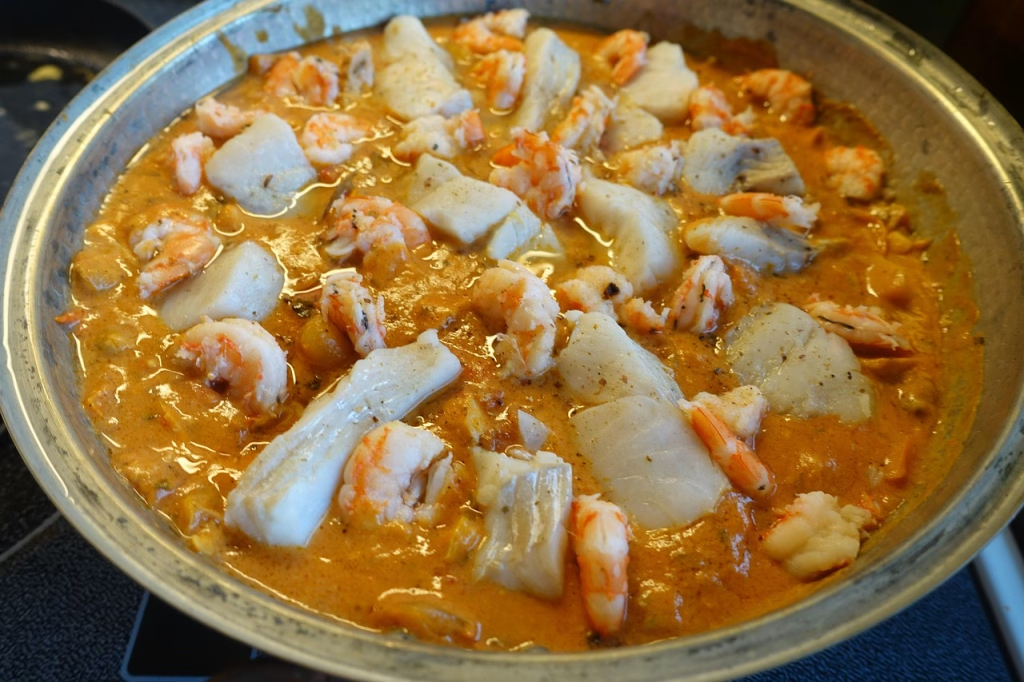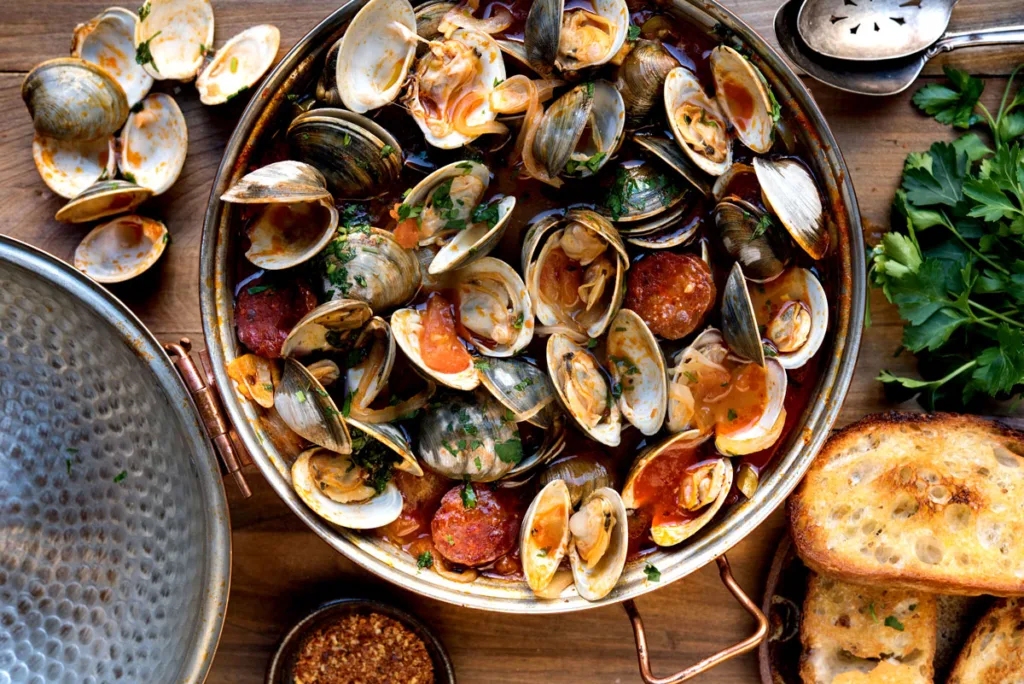The Cataplana is more than just a dish — it’s a symbol of Algarve’s culinary heritage. Named after the unique clam-shaped copper pan in which it’s cooked, the Cataplana embodies centuries of history, cultural fusion, and culinary ingenuity. Whether filled with seafood, pork, or vegetables, this dish continues to bring people together around the table.
Its origins date back to the Moorish occupation of southern Portugal, between the 8th and 13th centuries. The Moors brought with them not only spices like cinnamon and cumin but also advanced metalwork and cooking techniques. Historians believe the Cataplana pan was inspired by the tagine — a North African vessel designed to preserve moisture and flavor during long cooking.
The Cataplana dish itself reflects the Algarve’s abundance: clams, prawns, squid, and fresh fish are often combined with chorizo, peppers, onions, garlic, and a splash of white wine. Cooked inside the sealed pan, all the flavors meld together into a rich, fragrant stew. It’s slow, intentional cooking that captures the essence of both land and sea.
While many tourist restaurants may offer a version of the dish, locals in Tavira know where to go for the real thing. Ask around and you’ll hear glowing recommendations for places like Matias , just beside the bridge, or Zeca da Bica and Água Salgada near the market. These are the kinds of spots where locals and expats return again and again for honest, traditional Cataplana — prepared with care and without compromise.
If you’re seeking an authentic taste of the Algarve, start with the Cataplana. Not only is it delicious — it’s also a meal that tells the story of centuries of coastal culture, shaped by the sea and seasoned by history.



